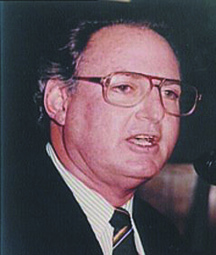Port of Spain, Trinidad – This is part three of a series about the life and times of one of cricket’s most famous commentators and writers, Tony Cozier….
Barbadian journalist Tony Cozier has also done publications of West Indies cricket, including “The West Indies: 50 Years of Test Cricket (published 1978)” as well as books with former greats Lloyd, Sir Garfield Sobers and Michael Holding.

Cozier noted, “I started the West Indies Cricket Annual in 1970 and that went until 1991 before the sponsors Benson and Hedges pulled out. So I converted that into the Caribbean Cricket Quarterly which was (sponsored by) Red Stripe. That went until 2001, when they pulled out. I said financially it wasn’t viable so I pulled out of that.”
He also reflected on the rise of the West Indies team, during the famed glory days.
“But going through the ’80s it was quite magnificent. I can’t imagine teams stronger than that. You turned up for a tour of Australia or England, or wherever, and never wondered if the West Indies would lose, just wondering when they would win, if in four days or three days. It was just a foregone conclusion. They were very confident.
“The (Kerry) Packer experience (in Australia) in ’78-79 then gave them autonomy, they didn’t have to worry about the Board, they had to worry about Packer because he was a very hard taskmaster,” Cozier noted.
“They became very fit, very disciplined and that was the big advantage when Packer left the scene and they came back in ’79. From then on, the West Indies did not lose a Test series. It was the Packer experience which got them up to that level of experience, which they maintained.”
And it was also during the Kerry Packer World Series Cricket (WSC) that Cozier made his entry into TV commentary.
“I never did television before,” he commented. “Packer started television there and I knew he did not have a West Indian commentator so I was going to go down anyhow to cover for the West Indian papers, just to see how it (the Packer series) went.
But then the manager of the West Indies’ Packer team was Dr Rudi Webster. “I rang him and said “I understand there is no West Indian commentators, could you see if they can use one, a West Indian voice, because there were about 24 West Indian players there, the West Indian team, the Australian team and the World team.” So he checked it out and they said “okay come and we’ll put you on and see how you go.”
At the end they said up until Christmas, which was the end of the West Indies involvement, and the top West Indians would go into the World team. That was it.”
A person who Cozier credited for his growth as a TV commentator was Australian producer David Hill “who was the top director (then) who is now a top man at Fox Sports in the US, we got on really well and he liked my style of commentary.
“He said “we want you to stay for the full season” but I couldn’t do that because I left home to (return) for Christmas. He said “we’ll fly your wife out” and they did that. I then stayed on and was with Packer then, and then Channel Nine when (the West Indies) went there regularly.” Cozier added, “from then, which would have been 1978 with Packer and then all the way until ’92, whenever the West Indies were in Australia. The last time I worked with them was in the ’92 World Cup and then Michael Holding took over from me. I had that experience with them.
“I never did television in England, always radio. I never did television outside of Australia because we didn’t have television outside of the West Indies until 1990 when England were here. IMG (Intern-ational Management Group) started it. They were contracted by the (West Indies Cricket) Board to produce the cricket for them.”
Cozier was interviewed in Barbados “and (the interviewer) offered up a price. I said “well I get more than that doing cricket for Radio Montserrat”. I let him know because he thought I was a poor West Indian fellah and I would take it, but it wasn’t that way. So I went on and worked with them on every West Indian series.”
First Published In The Trinidad & Tobago Newsday.





